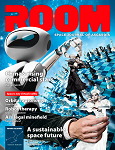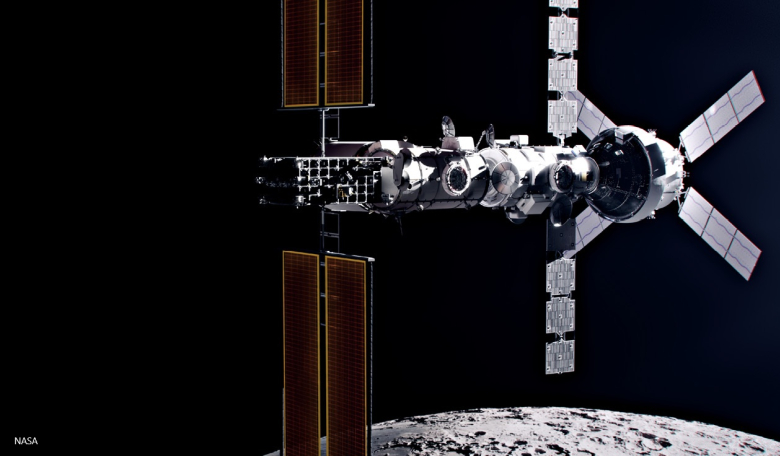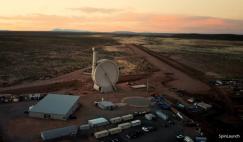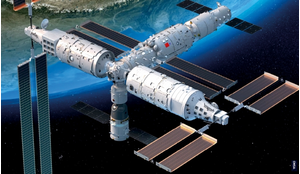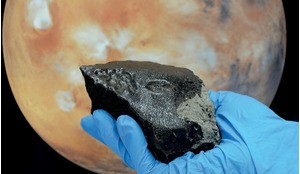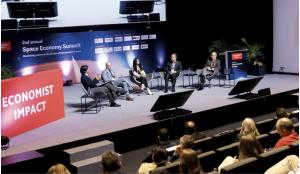Artist rendering of the Lunar I-Hab module delivery to Gateway on the Artemis IV mission. The Gateway Program is an international collaboration to establish a space station around the Moon as a vital component of the Artemis campaign. If it proceeds as planned, Gateway will help test the technologies and capabilities required for a sustained human presence in deep space.
While the Space Race didn’t become ‘official’ until President John F Kennedy’s famous speech in 1961, it actually began immediately after World War II. Showing off technological and implicit military prowess to the world was a primary motivation then, but there are now wider issues at stake than there were in the 20th century. Unlike the Soviet Union, even if China ‘loses’ any current race, it is unlikely to pretend it did not want to get there in the first place. Nor will it give up its lunar ambitions.
There are also more players today: India is on the verge of launching its first astronauts and Europe will feel the need to develop independent capabilities if President Trump follows through on threats to withdraw international cooperation. Meanwhile, Russia remains a power in space, if a greatly diminished one.
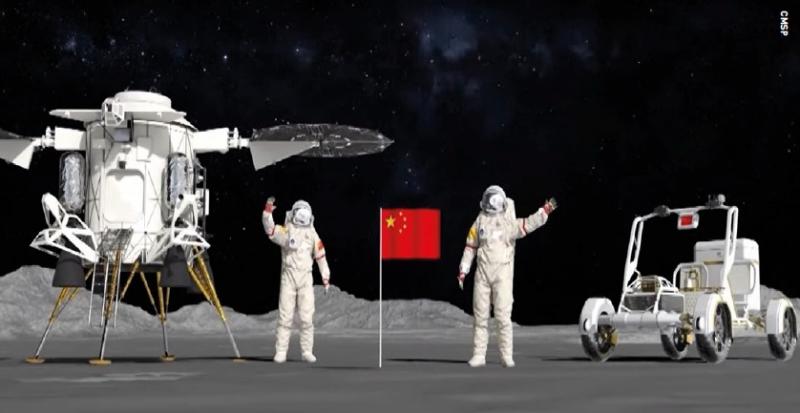 In February 2025 China unveiled the official names for a spacesuit and lunar rover to be used in its mission to land astronauts on the Moon by 2030. The spacesuit, which has been named Wangyu, meaning ‘gazing into the cosmos’, is equipped with a built-in long and short-range camera, an operations console, and a glare-proof helmet visor. The Lunar Rover has been named Tansuo, which means ‘to explore the unknown’.
In February 2025 China unveiled the official names for a spacesuit and lunar rover to be used in its mission to land astronauts on the Moon by 2030. The spacesuit, which has been named Wangyu, meaning ‘gazing into the cosmos’, is equipped with a built-in long and short-range camera, an operations console, and a glare-proof helmet visor. The Lunar Rover has been named Tansuo, which means ‘to explore the unknown’.
Status report
Despite the relative simplicity of the Chinese plan, any human mission to the Moon will be very expensive
In October 2024, the English language service of the State Council of the People’s Republic of China published a brief status report. Elements of the new heavy-lift Long March 10 rocket are in production and being tested. An automated prototype of a three to six crew spacecraft called Mengzhou (‘Dream Vessel’) was flight tested as early as May 2020. Intended for deep space missions and to replace the current crew transport for China’s space station, it includes a reusable crew module and an expendable service module. A lander called Lanyue (‘Embracing Earth’s Moon’) is also in development, according to the report, as is a rover to transport scientists around the landing site.
Other sources describe the mission status in more detail. Long March 10 achieved clustered engine tests in June 2024 and a first flight is expected in 2027, or possibly as early as 2026. The rocket’s 70 tonne payload to low Earth orbit (LEO) is less than either NASA’s Space Launch System (SLS) rocket or SpaceX’s Starship, and only a little more than the Falcon Heavy’s 63.8 tonnes. Long March 10 can deliver 27 tonnes to trans-lunar injection.
Instead of waiting to develop a super-heavy rocket for its lunar transportation system, China plans to launch two Long March 10 rockets for each mission, one of which will send an uncrewed Lanyue landing vehicle to lunar orbit. Once the lander is checked out, a Mengzhou spacecraft with a crew of three is launched to the same orbit on the second Long March 10, where it docks with the lander. Two crew members transfer to that vehicle and begin their descent to the lunar surface.
The lunar transfer stage slows the descent vehicle most of the way to the surface (presumably to reduce the weight of the lander), then the stage is released and deflected to impact the lunar surface at a safe distance. Lanyue itself uses four small engines for the terminal approach and landing.
China is expected to select a landing site near the lunar south pole. The crew will explore and sample the site, hoping to confirm claims of water ice on or near the surface. After a short visit, Lanyue takes off to rendezvous with Mengzhou, waiting in orbit, which then returns to Earth. Except for launching the lander and crew in separate rockets and using the lunar insertion stage for part of the descent, this lunar orbit rendezvous architecture is very reminiscent of the successful US Apollo programme, albeit on a larger scale. Notably, it is also far simpler than the current US Artemis plan.
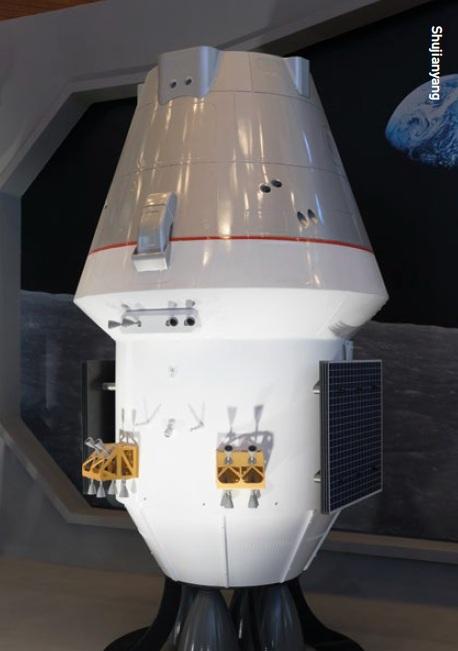 A model of the Mengzhou, formerly known as the Next-Generation Crewed Spacecraft, displayed at the National Museum of China.
A model of the Mengzhou, formerly known as the Next-Generation Crewed Spacecraft, displayed at the National Museum of China.
Artemis architecture
China’s leader, Xi Jinping, wants China to be “a great space power”
In early Artemis missions, a super heavy-lift SpaceX Starship, modified for landing on the lunar surface, flies to Earth orbit; once there, it is refuelled using multiple additional Starship launches. The refuelled Starship flies to an unusual lunar orbit - a near-rectilinear halo orbit - a semi-stable orbit that is easier to reach than a traditional orbit.
A NASA Space Launch System rocket boosts the crew in an Orion capsule, which flies to the same rectilinear orbit and docks with the Starship. After transferring to Starship, the crew descends to the lunar surface.
Later missions utilise different landers provided by multiple companies, including Jeff Bezos’ Blue Moon lander, an approach that creates competition and enables specialised landers for different missions.
After the first mission, a small permanent space station called the Lunar Gateway, also in rectilinear halo orbit, assists crew transfers and logistics. A space station implies a freighter, and SpaceX is currently under a public-private partnership style contract to build it.
The Artemis project is backed by a series of bilateral international agreements, called the Artemis Accords. The Accords have been signed by 53 nations which agree to rules of the road in cis-lunar space and on the lunar surface.
European nations are major participants in Artemis, and contribute service modules for the Orion deep space capsules, loosely based on the propulsion module of the Columbus European freighter; a habitation module for the Lunar Gateway station; and the ESPRIT Refuelling, Infrastructure and Telecommunications module with observation windows, for the Gateway.
In addition, Japan is contributing utilities for the Gateway and a pressurised rover for transporting astronauts on the lunar surface, while Canada is building a robot arm. In return, European, Japanese and Canadian astronauts will be included in early lunar missions.
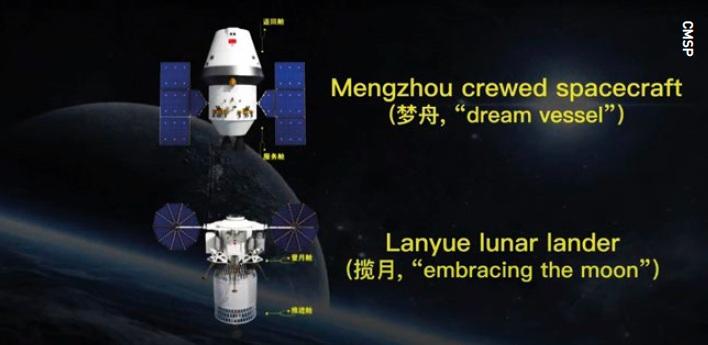
Reasons and resources
With the lunar far-side landing, China has achieved something that the world’s preeminent nation in automated space science has not
Despite the relative simplicity of the Chinese plan, any human mission to the Moon will be very expensive. So why do it, especially at a time when China’s economy is struggling? Why do it when President Trump has imposed economically painful tariffs, and China is spending vast sums preparing for potential war with the United States over Taiwan and other issues?
China’s leader, Xi Jinping, wants China to be “a great space power”. So, to the degree that one believes ambitious space exploration and potential development are important, Earth’s moon also becomes important.
Another reason is resources, for example water ice that probably exists in permanently dark craters and other sites near the lunar poles. Water is one of the heaviest requirements for human life and it is needed in quantity. In addition to its use for drinking, bathing and growing food, water can be split into hydrogen and oxygen for rocket fuel and oxidiser. The latter can be mixed with nitrogen or other buffer gasses to breathe.
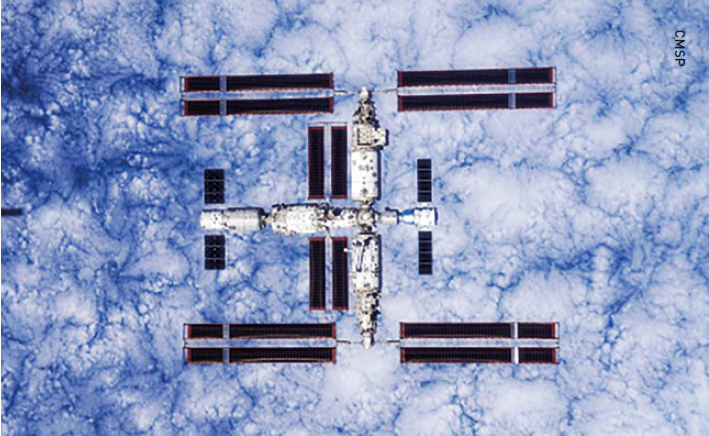 A photograph of the Tiangong space station taken by a member of the Shenzhou-16 spacecraft crew as it made its way back to Earth after delivering three crew members to the station.
A photograph of the Tiangong space station taken by a member of the Shenzhou-16 spacecraft crew as it made its way back to Earth after delivering three crew members to the station.
Not needing to lift this heavy commodity to the top of Earth’s deep gravity well makes a permanent lunar outpost cheaper to supply, and therefore more realistic. Further in the future, Helium-3 might be strip-mined to fuel relatively easy, clean and efficient nuclear fusion reactions without generating large amounts of radioactive waste. Helium-3 is deposited into lunar regolith by the solar wind and is not readily available on Earth.
Even before President Trump started asserting rights for physical expansion on Earth and to Mars, China was wary about being cut off from long-term access to lunar resources.
So, China has been working with Russia on a potential lunar base (although the latter has chosen to prioritise military adventures in Ukraine and is decidedly the junior partner). Another clue is China’s imitation of NASA’s Artemis Accords which has been signed by Argentina, Nicaragua and Pakistan, as well as Asia Pacific and Arab international organisations.
The nations interested in long-term lunar exploration are rapidly sorting themselves into two politically and economically opposed blocks, generally mirroring those on Earth.
Technical success
Sending Chinese astronauts to the Moon before the United States would send a dramatic signal
China has achieved some very impressive technical successes. In automated exploration, it landed a Chang’e spacecraft (‘graceful moon goddess’) with a small rover on the far side of the Moon before anyone else - the kind of pioneering role that until recently was the exclusive realm of the United States and the former Soviet Union.
A Mars lander (Tianwen-1, implying ‘pursuit of knowledge of the heavens’) touched down on Utopia Planitia and deployed a simple rover Zhurong (‘god of fire’). This made China only the second nation to land a usefully functioning spacecraft on Mars. It is also preparing to return samples from Mars and fly missions deep into the outer solar system.
It can be argued that these missions do not yet approach the scientific and technical sophistication of, say, NASA’s Perseverance Mars rover, with its long drive over the remnants of a river delta and climb to the rim of Jezero Crater. However, to most outside observers, the fact that China landed on Mars at all is more important than what it did there.
Until recently, China has largely been a technological follower, and Chang’e notwithstanding, arguably in space it still is. The US has the Global Positioning System, so China developed Beidou (‘Big Dipper’). SpaceX developed Starlink, so China has Gouwang, deployed by the government. The ‘Thousand Sails’ and other Starlink competitors are being developed by ostensible cpmanies in China.
In parallel, a large number of Party-sanctioned ‘commercial’ companies are developing rockets that look remarkably like Western counterparts, particularly SpaceX’s Falcon-9 and Starship. The Chinese government appears to be encouraging these developments to try to duplicate the highly competitive environment that created launch vehicle successes in the West, such as those of SpaceX and Rocket Lab. By and large, China is still not inventing ideas for new space-based industries or military capabilities; it is copying and modifying ideas from outside and attempting to compete with them. China may try to appear the West’s equal, but until entirely new ideas originate in China, it is not.
Notwithstanding limited inventiveness, the sheer breadth of Chinese projects carries its own weight. The West has a handful of companies developing large new launch vehicles; China alone has tens. It is unclear how many have realistic prospects for success, but a lot of money is being spent.
After multiple lunar landers, China has proven the equal of Russia and bested the US with an automated sample return. Later this year, China intends to repeat that mission, this time returning samples from the lunar far side.
In total, the Chang’e programme required the development of the following:
- A communications relay spacecraft Queqiao (‘Magpie Bridge’) with a large unfurlable antenna. This comsat was deployed to orbit the Lagrange-2 gravitationally stable point beyond the Moon. There, it can receive signals from landers on the lunar far side whilst relaying the signals past the Moon to Earth. Apparently, China is considering exploiting Queqiao or a replacement to support a human landing on the lunar far side after 2030
- A translunar spacecraft to deliver the lander to lunar orbit
- A descent spacecraft capable of landing in rugged and largely unknown terrain
- A robotic arm and drill for retrieving approximately two-kilogram samples and transferring them to the ascent vehicle, all while avoiding contamination of the samples with anything of terrestrial origin
- A compact single-stage rocket to take off from the lunar surface, rendezvous and dock with the translunar craft waiting in lunar orbit and transfer the sample canister to the latter’s re-entry vehicle. The mother ship returns to Earth and releases a return capsule
- A return capsule, to enter Earth’s atmosphere and land with the samples intact in Siziwangqi, Mongolia.
All of these spacecraft had to be tested on the ground and some were flight tested to practice subsets of the total mission in space.
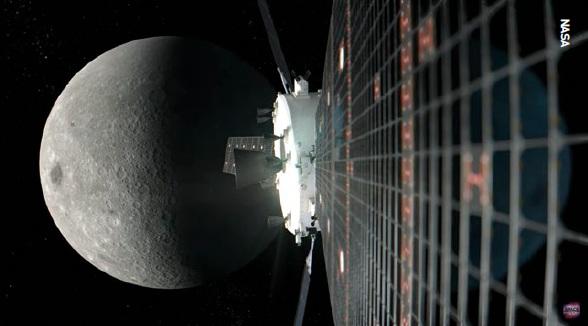 For the Artemis 2 mission, planned for no earlier than April 2026, the four astronauts of the Orion spacecraft (Reid Wiseman, Victor Glover, Christina Koch, Jeremy Hansen) will perform a flyby of the Moon and return to Earth.
For the Artemis 2 mission, planned for no earlier than April 2026, the four astronauts of the Orion spacecraft (Reid Wiseman, Victor Glover, Christina Koch, Jeremy Hansen) will perform a flyby of the Moon and return to Earth.
Among other things, the Chang’e-5 near side sample return secured evidence that lunar volcanic activity occurred much more recently than previously believed. This year’s Chang’e-6 far side sample return will be scientifically important because the highland-dominated terrain there is very different from the near side, with its vast lava plains filling ancient impact basins. Notwithstanding the highland setting, the intended landing site appears to be in or near the South Pole’s Aitken Basin. This is one of the oldest and deepest lunar impact basins and may be expected to expose material from very early in lunar history.
The optimistic view is that Trump’s triumphalism will play out in demonstrations of political power, rather than the application of military power
In 2026, an even more ambitious Chang’e-7 will deploy an orbiter and south polar lander to prospect for water ice. According to a Chinese National Space Agency press release quoting Wu Weiren, Chief Designer of China’s lunar exploration programme, Chang’e-7 will include a special craft able to fly from the landing site to a nearby, permanently dark, crater to explore for traces of water. In 2028, Chang’e-8 will experiment with utilising local resources in preparation for the human missions.
Contrast the situation in the United States. Beginning in 2018, NASA subsidised a number of private groups proposing lunar missions, most of which involved landers. After years of delay, only two Commercial Lunar Payload Services (CLPS) missions have been completed: a largely failed mission by Astrobotic and a partial success from Intuitive Machines. While a number of new attempts are imminent, so far, the CLPS programme has done more to emphasise China’s impressive achievements than to look like serious competition.
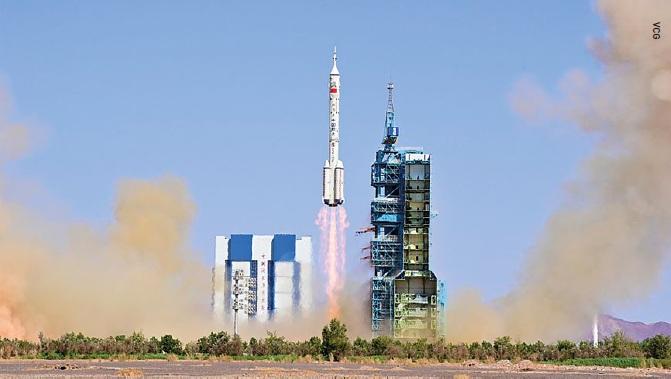 A Long March-2F carrier rocket took off from the Jiuquan Satellite Launch Centre on 26 October 2023 taking three Chinese astronauts to China’s orbital space station.
A Long March-2F carrier rocket took off from the Jiuquan Satellite Launch Centre on 26 October 2023 taking three Chinese astronauts to China’s orbital space station.
Many elements of the Chang’e architecture duplicate on a smaller scale China’s human mission plans for the early 2030s. The lunar sample return tested in miniature most of the operations and many of the technologies necessary to achieve a human landing. Thus, China has recent experience flying a complete two-way lunar transportation system, a capability the US government abandoned in 1972 and has never regained. Apollo engineers are long since retired or dead, and with them their unique institutional knowledge of deep space human space travel.
Arguably, China is conducting the current lunar race from a better operational position than the US, especially given the greater simplicity and lower cost of its approach.
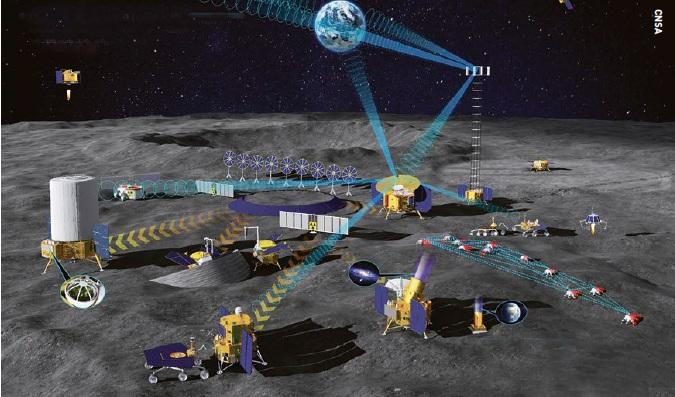 Artistic representation of China’s proposed International Lunar Research Station (ILRS), a planned lunar base currently being led by Roscosmos and the China National Space Administration (CNSA). Senegal was the most recent signatory to the agreement on cooperation on the research station in September 2024, taking the number of participating nations to 13. There are also a number international entities and firms partnering with them at a sub-national level.
Artistic representation of China’s proposed International Lunar Research Station (ILRS), a planned lunar base currently being led by Roscosmos and the China National Space Administration (CNSA). Senegal was the most recent signatory to the agreement on cooperation on the research station in September 2024, taking the number of participating nations to 13. There are also a number international entities and firms partnering with them at a sub-national level.
Bigger picture
This new space race is a small part of a much larger race. China’s Xi and Russia’s Vladimir Putin, along with others who do not much like rules, are warily collaborating to create a ‘new world order’, which looks a lot like a very old order.
Xi appears to believe that China’s commerce-oriented dictatorship represents the future and wants to demonstrate that by building the world’s largest navy, the most advanced military aircraft and a visibly successful space programme.
For better or worse, spaceflight achievements are seen by many as proxies for scientific, engineering and economic prowess. With the lunar far-side landing, China has achieved something that the world’s preeminent nation in automated space science has not. That plays into the wider competition for ideological supremacy.
If ‘unaligned nations’ respect China’s scientific and engineering prowess, and it appears more successful than the ‘liberal Western economies’, they will be more likely to subscribe to China’s vision of a new world order - one of Asian design displacing the old ‘imperialist’ world order of the West. This is especially so if China provides commercial and trade incentives, such as cooperation on its space station or the Belt and Road initiative, which supports developing nations with low-cost infrastructure subsidised and built by China.
Sending Chinese astronauts to the Moon before the United States would send a dramatic signal, implying that governance and technology with Chinese characteristics is a better way to create, organise and modernise powerful and successful nations than following the stale rules that benefit the West.
To be clear, overall, the US remains far ahead of China in both human and automated spaceflight. However, current US missions remain bogged down in political infighting, inertia and overly complex and expensive projects. China’s build-up of capability has been well planned, spectacularly rapid and generally successful.
As the new administration reviews the Artemis project, the most likely elements to be revisited are the SLS, Orion and Gateway – the very elements European industries are contributing
China’s first human spacecraft was a capsule derived from the Soviet Union’s old Soyuz design, albeit considerably larger. Just over two decades later, China is conducting regular operations with a large space station and seriously preparing to send astronauts to the Moon.
Moreover, China’s exploits are not only about image: China uses its spacefaring skills to support direct military power. Prof S Chandrashekar of the National Institute of Advanced Studies in Bangaluru, India, argues that China’s military space programme emphasises an “anti-access, area denial” strategy, using increasingly sophisticated observation satellites and satellite-guided, long-range missiles to make it too dangerous for Western aircraft carriers to intervene in any Taiwan conflict.
China has deployed its own aircraft carriers capable of projecting military power over great distances. They are guided and coordinated by increasingly sophisticated networks of military radar, communications and navigation satellites. These huge ships are part of a navy that now has more ships than any Western rival. China’s Air Force operates fourth-generation fighter jets, is deploying fifth-generation jets which may be equal to Western kit and has flying prototypes of possible sixth-generation fighters. The American trade journal Aviation Week and Space Technology has argued that some of China’s latest designs break new ground and are no longer direct copies of Western technology. As in spaceflight, money for the military appears to be no object.
The elephant in the room, of course, is the return of Donald Trump to the world stage. It is unclear how his plans to turn the United States away from the world will affect international relations and the Artemis Accords, but it is unlikely to be positive. Any US withdrawal will occur just when China is pushing hard to increase its international influence.
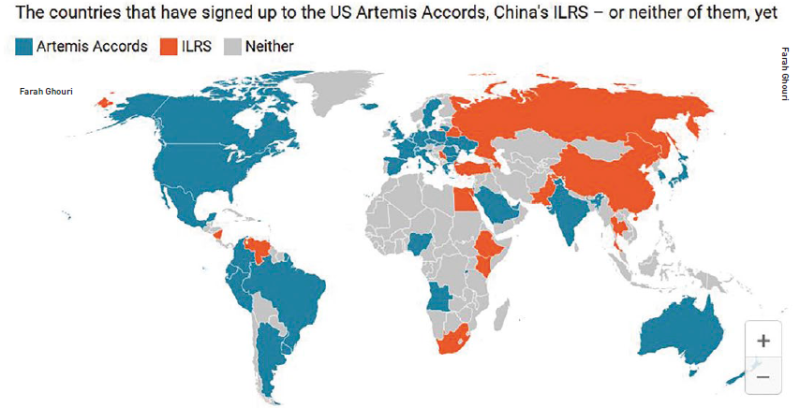 World map indicating countries that had signed up to the US Artemis Accords, China’s International Lunar Research Station, or neither of them, as at 31 May 2024.
World map indicating countries that had signed up to the US Artemis Accords, China’s International Lunar Research Station, or neither of them, as at 31 May 2024.
Mr Trump sees his return as triumphant and will look to capitalise on that. The optimistic view is that Trump’s triumphalism will play out in demonstrations of political power, rather than the application of military power. One such demonstration might be to streamline NASA’s Artemis programme to a simplified architecture that might actually achieve its stated goal to beat China back to the Moon. That would involve taking on a lot of entrenched interests at NASA and the legislative branches, in particular the Senate. It would also involve continued cooperation from countries that are providing critical components and that Mr Trump has threatened with tariffs.
As the new administration reviews the Artemis project, the most likely elements to be revisited are the SLS, Orion and Gateway - the very elements European industries are contributing. Cutting Europe out will end its financial support and make future component supply politically complex. One commentator has suggested that European nations might convert their Gateway components into their own LEO outpost.
Mr Trump wants to disrupt many things, including the space programme. He likes grandiose visions and projects and has toyed with reorienting NASA’s focus from cis-lunar development to Mars. That would probably be a mistake, leaving any lunar resources that prove to be real to China and Russia.
It is far from clear that Mr Trump’s chaotic administration will have the political skills, or indeed the patience, to pull a divided United States together to achieve major Mars expeditions - or even to beat China in a return to the Moon.
If China and the West are indeed racing to the Moon, despite every advantage in technology and experience, it is a race that the West is not well-placed to win.
About the author
Donald F. Robertson is a freelance writer based in San Francisco and has published articles on many aspects of space exploration and development. He is also an angel investor or small shareholder in many of the CLPS companies. In his spare time, Donald is a musician and performs for Scottish country dance bands.


